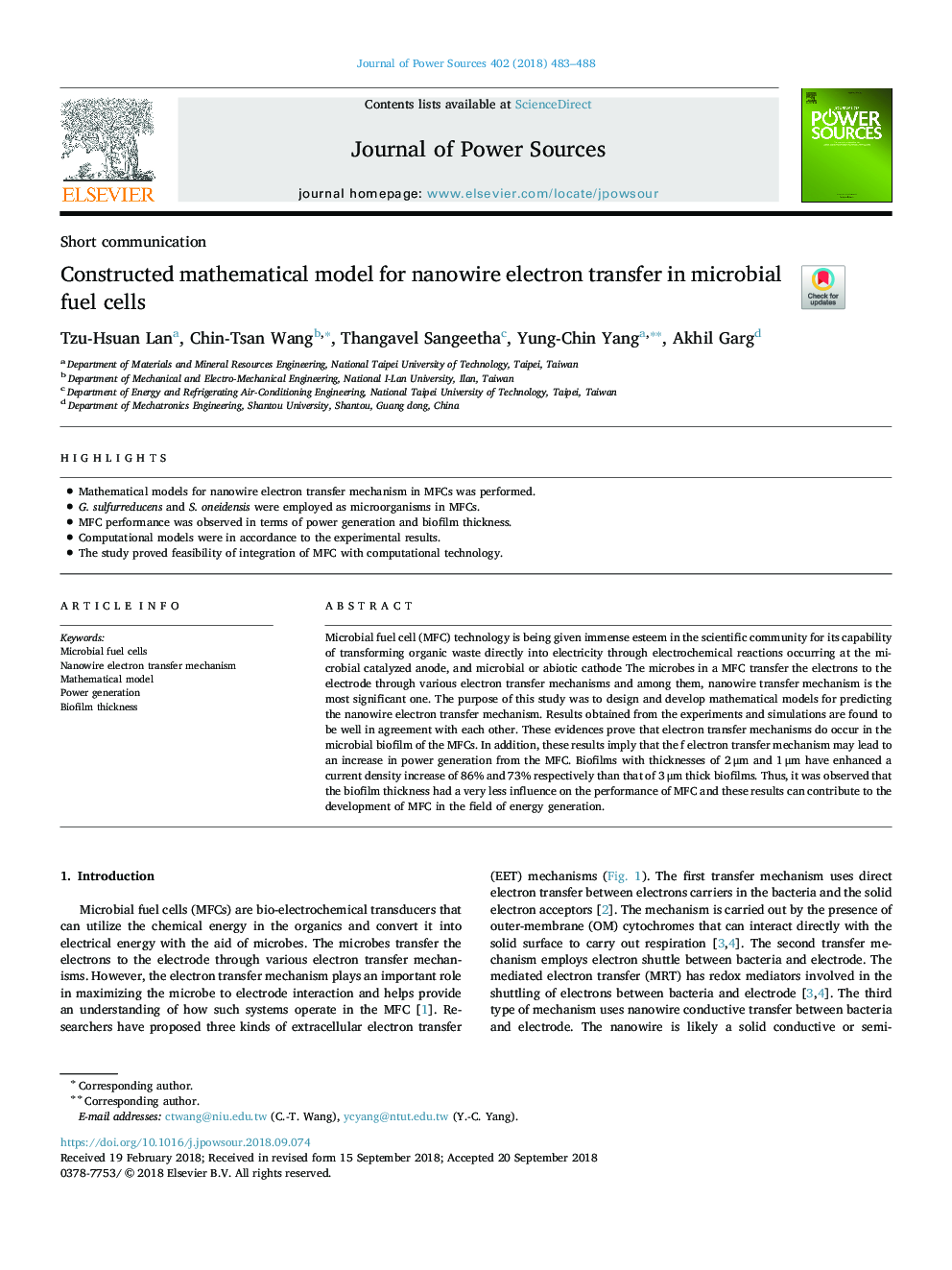| Article ID | Journal | Published Year | Pages | File Type |
|---|---|---|---|---|
| 11027294 | Journal of Power Sources | 2018 | 6 Pages |
Abstract
Microbial fuel cell (MFC) technology is being given immense esteem in the scientific community for its capability of transforming organic waste directly into electricity through electrochemical reactions occurring at the microbial catalyzed anode, and microbial or abiotic cathode The microbes in a MFC transfer the electrons to the electrode through various electron transfer mechanisms and among them, nanowire transfer mechanism is the most significant one. The purpose of this study was to design and develop mathematical models for predicting the nanowire electron transfer mechanism. Results obtained from the experiments and simulations are found to be well in agreement with each other. These evidences prove that electron transfer mechanisms do occur in the microbial biofilm of the MFCs. In addition, these results imply that the f electron transfer mechanism may lead to an increase in power generation from the MFC. Biofilms with thicknesses of 2â¯Î¼m and 1â¯Î¼m have enhanced a current density increase of 86% and 73% respectively than that of 3â¯Î¼m thick biofilms. Thus, it was observed that the biofilm thickness had a very less influence on the performance of MFC and these results can contribute to the development of MFC in the field of energy generation.
Related Topics
Physical Sciences and Engineering
Chemistry
Electrochemistry
Authors
Tzu-Hsuan Lan, Chin-Tsan Wang, Thangavel Sangeetha, Yung-Chin Yang, Akhil Garg,
